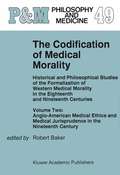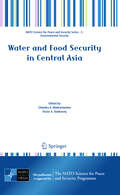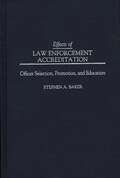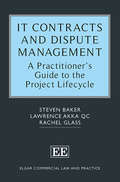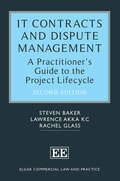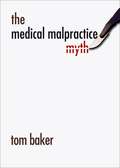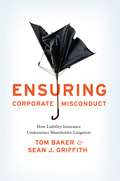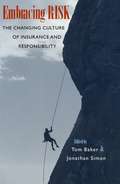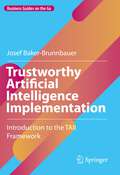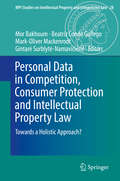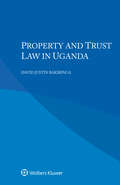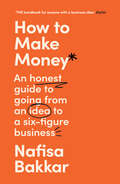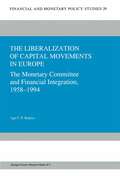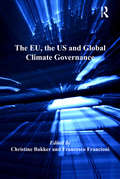- Table View
- List View
Before Bioethics: A History of American Medical Ethics from the Colonial Period to the Bioethics Revolution
by Robert BakerBefore Bioethics narrates the history of American medical ethics from its colonial origins to current bioethical controversies over abortion, AIDS, animal rights, and physician-assisted suicide. This comprehensive history tracks the evolution of American medical ethics over four centuries, from colonial midwives and physicians' oaths to medical society codes, through the bioethics revolution. Applying the concept of "morally disruptive technologies," it analyzes the impact of the stethoscope on conceptions of fetal life and the criminalization of abortion, and the impact of the ventilator on our conception of death and the treatment of the dying. The narrative offers tales of those whose lives were affected by the medical ethics of their era: unwed mothers executed by puritans because midwives found them with stillborn babies; the unlikely trio-an Irishman, a Sephardic Jew and in-the-closet gay public health reformer-who drafted the American Medical Association's code of ethics but received no credit for their achievement, and the founder of American gynecology celebrated during his own era but condemned today because he perfected his surgical procedures on un-anesthetized African American slave women. The book concludes by exploring the reasons underlying American society's empowerment of a hodgepodge of ex-theologians, humanist clinicians and researchers, lawyers and philosophers-the bioethicists-as authorities able to address research ethics scandals and the ethical problems generated by morally disruptive technologies. To access the companion website for Before Bioethics: A History of American Medical Ethics from the Colonial Period to the Bioethics Revolution, please visit: http://global.oup.com/us/companion.websites/9780199774111/
The Codification of Medical Morality: Historical and Philosophical Studies of the Formalization of Western Medical Morality in the Eighteenth and Nineteenth CenturiesVolume Two: Anglo-American Medical Ethics and Medical Jurisprudence in the Nineteenth Century (Philosophy and Medicine #49)
by Robert Baker Dorothy Porter Roy PorterLike many novel ideas, the idea for this volume and its predecessor arose over lunch in the cafeteria of the old Wellcome Institute. On an atternoon in Sept- ber 1988, Dorothy and Roy Porter, and I, sketched out a plan for a set of conf- ences in which scholars from a variety of disciplines would explore the emergence of modern medical ethics in the English-speaking world: from its pre-history in the quarrels that arose as gentlemanly codes of etiquette and honor broke down under the pressure of the eighteenth-century "sick trade," to the Enlightenment ethics of John Gregory and Thomas Percival, to the American appropriation process that culminated in the American Medical Association's 1847 Code of Ethics, and to the British turn to medical jurisprudence in the 1858 Medical Act. Roy Porter formally presented our idea as a plan for two back-to-back c- ferences to the Wellcome Trust, and I presented it to the editors of the PHI- LOSOPHY AND MEDICINE series, H. Tristram Engeihardt, Jr. and Stuart Spicker. The reception from both parties was enthusiastic and so, with the financial backing of the former and a commitment to publication from the latter, Roy Porter, ably assisted by Frieda Hauser and Steven Emberton, - ganized two conferences. The first was held at the Wellcome Institute in - cember 1989; the second was sponsored by the Wellcome, but was actually held in the National Hospital, in December 1990.
Water and Food Security in Central Asia (NATO Science for Peace and Security Series C: Environmental Security)
by Robert S. Baker I. Helen FylesCentral Asia is vulnerable to water scarcity because it is located in semiarid and arid vegetation zones and large parts of its economy depend on water for irrigation and energy. Climate-change scenarios predict temperature increases and a rising number of extreme weather events, which will exacerbate water shortages in the future. In addition, the population of Central Asia is growing more rapidly than the rate of food production which is resulting in food insecurity in many parts of the region too. This volume reports the deliberations of politicians, scientists and representatives of water management organizations from throughout Central Asia. Their contributions not only highlight areas of concern, but also propose numerous ideas for improving the long-term water- and food security in the region.
The Oxford History of the Laws of England Volume VI: 1483-1558 (The Oxford History of the Laws of England Series isbn 0-19-961352-4)
by Sir John BakerThis volume covers the years 1483-1558, a period of immense social, political, and intellectual changes, which profoundly affected the law and its workings. It first considers constitutional developments, and addresses the question of whether there was a rule of law under king Henry VIII. In a period of supposed despotism, and enhanced parliamentary power, protection of liberty was increasing and habeas corpus was emerging. The volume considers the extent to which the law was affected by the intellectual changes of the Renaissance, and how far the English experience differed from that of the Continent. It includes a study of the myriad jurisdictions in Tudor England and their workings; and examines important procedural changes in the central courts, which represent a revolution in the way that cases were presented and decided. The legal profession, its education, its functions, and its literature are examined, and the impact of printing upon legal learning and the role of case-law in comparison with law-school doctrine are addressed. The volume then considers the law itself. Criminal law was becoming more focused during this period as a result of doctrinal exposition in the inns of court and occasional reports of trials. After major conflicts with the Church, major adjustments were made to the benefit of clergy, and the privilege of sanctuary was all but abolished. The volume examines the law of persons in detail, addressing the impact of the abolition of monastic status, the virtual disappearance of villeinage, developments in the law of corporations, and some remarkable statements about the equality of women. The history of private law during this period is dominated by real property and particularly the Statutes of Uses and Wills (designed to protect the king's feudal income against the consequences of trusts) which are given a new interpretation. Leaseholders and copyholders came to be treated as full landowners with rights assimilated to those of freeholders. The land law of the time was highly sophisticated, and becoming more so, but it was only during this period that the beginnings of a law of chattels became discernible. There were also significant changes in the law of contract and tort, not least in the development of a satisfactory remedy for recovering debts.
Effects of Law Enforcement Accreditation: Officer Selection, Promotion, and Education (Non-ser.)
by Stephen A. BakerFor many years, law enforcement administrators, government officials, and researchers have explored the possibility of professionalizing law enforcement agencies and their officers. Some have called for mandatory college education requirements while others have argued for the formation of a national police force. In 1979, police practitioners from various law enforcement executive organizations met to develop a process to professionalize police agencies by instituting standards covering the wide range of police functions. The Commission on Accreditation for Law Enforcement Agencies, Inc. (CALEA) was born. This book describes the results of a study that evaluated the impact of CALEA accreditation on specific personnel administration practices in municipal police departments. The author compares accredited and non-accredited departments for personnel practices including procedures for officer selection, promotion, and the integration of formal education requirements.
IT Contracts and Dispute Management: A Practitioner’s Guide to the Project Lifecycle (Elgar Commercial Law and Practice series)
by Steven Baker Lawrence Akka Rachel GlassIT Contracts and Dispute Management provides in-depth analysis of the legal issues that customers and suppliers involved in a technology project can face at each of its critical stages. The authors offer a practitioner’s-eye view of both the impact of those issues and how to resolve them or minimise their effect. Key features include: • guidance on all stages of a technology project presented in the order in which they typically occur • discussion of the tender process, preparation of contract terms and project delivery • advice on how to manage commonly occurring issues, such as delayed delivery • insight into potential methods of project ‘resuscitation’ when difficulties arise • advice on ‘end of project’ issues, including termination options, formal resolution of disputes and quantification of losses • first-hand insights drawing on the authors’ extensive personal experiences throughout. This new work is the first thorough examination of the legal framework underpinning IT contracts and technology projects. It focuses on English contract law as it applies in this specific context, but combines a detailed legal analysis of common law principles with commercial and tactical guidance, making it suitable for lawyers worldwide. It will be a valuable resource for lawyers in private practice who are advising clients on the avoidance or resolution of disputes arising from IT projects, and to in-house legal counsel who advise on the procurement, supply, or management of IT projects.
IT Contracts and Dispute Management: A Practitioner’s Guide to the Project Lifecycle (Elgar Commercial Law and Practice series)
by Steven Baker Lawrence Akka Rachel GlassThis thoroughly revised and expanded second edition of IT Contracts and Dispute Management provides an in-depth analysis of the legal issues that could potentially arise within each critical stage of a technology project. The authors draw on their extensive practical experience of advising and litigating in this evolving field, and have produced a work that is both authoritative and pragmatic.Key Features:Discussion of recent judicial decision of relational contracts, and the Supreme Court’s judgment on ‘no oral modification’ clauses and their applicability to change control proceduresUpdated information to account for the new High Court rules on disclosureGuidance on how to manage frequently occurring issues, such as delayed deliveryExamination of important methods of project resuscitation when experiencing difficulty, as well as potential end of project issuesThis informative book will be a hugely valuable resource for lawyers in private practice who are advising clients striving to avoid or resolve disputes occurring from IT projects. It will also be beneficial for in-house legal counsel who advise clients at each stage of IT projects.
The Medical Malpractice Myth (The\chicago Ser. On Sexuality, History, And Society Ser.)
by Tom BakerAmerican health care is in crisis because of exploding medical malpractice litigation. Insurance premiums for doctors and malpractice lawsuits are skyrocketing, rendering doctors both afraid and unable to afford to continue to practice medicine. Undeserving victims sue at the drop of a hat, egged on by greedy lawyers, and receive eye-popping awards that insurance companies, hospitals, and doctors themselves struggle to pay. The plaintiffs and lawyers always win; doctors, and the nonlitigious, always lose; and affordable health care is the real victim. This, according to Tom Baker, is the myth of medical malpractice, and as a reality check he offers The Medical Malpractice Myth, a stunning dismantling of this familiar, but inaccurate, picture of the health care industry. Are there too many medical malpractice suits? No, according to Baker; there is actually a great deal more medical malpractice, with only a fraction of the cases ever seeing the inside of a courtroom. Is too much litigation to blame for the malpractice insurance crisis? No, for that we can look to financial trends and competitive behavior in the insurance industry. Are these lawsuits frivolous? Very rarely. Point by point, Baker—a leading authority on insurance and law—pulls together the research that demolishes the myths that have taken hold about medical malpractice and suggests a series of legal reforms that would help doctors manage malpractice insurance while also improving patient safety and medical accountability. President Bush has made medical malpractice reform a priority in his last term in office, but if history is any indication, legislative reform would only worsen the situation and perpetuate the gross misunderstanding of it. The debate surely will be transformed by The Medical Malpractice Myth, a book aimed squarely at general readers but with radical conclusions that speak to the highest level of domestic policymaking.
The Medical Malpractice Myth
by Tom BakerAmerican health care is in crisis because of exploding medical malpractice litigation. Insurance premiums for doctors and malpractice lawsuits are skyrocketing, rendering doctors both afraid and unable to afford to continue to practice medicine. Undeserving victims sue at the drop of a hat, egged on by greedy lawyers, and receive eye-popping awards that insurance companies, hospitals, and doctors themselves struggle to pay. The plaintiffs and lawyers always win; doctors, and the nonlitigious, always lose; and affordable health care is the real victim. This, according to Tom Baker, is the myth of medical malpractice, and as a reality check he offers The Medical Malpractice Myth, a stunning dismantling of this familiar, but inaccurate, picture of the health care industry. Are there too many medical malpractice suits? No, according to Baker; there is actually a great deal more medical malpractice, with only a fraction of the cases ever seeing the inside of a courtroom. Is too much litigation to blame for the malpractice insurance crisis? No, for that we can look to financial trends and competitive behavior in the insurance industry. Are these lawsuits frivolous? Very rarely. Point by point, Baker—a leading authority on insurance and law—pulls together the research that demolishes the myths that have taken hold about medical malpractice and suggests a series of legal reforms that would help doctors manage malpractice insurance while also improving patient safety and medical accountability. President Bush has made medical malpractice reform a priority in his last term in office, but if history is any indication, legislative reform would only worsen the situation and perpetuate the gross misunderstanding of it. The debate surely will be transformed by The Medical Malpractice Myth, a book aimed squarely at general readers but with radical conclusions that speak to the highest level of domestic policymaking.
The Medical Malpractice Myth
by Tom BakerAmerican health care is in crisis because of exploding medical malpractice litigation. Insurance premiums for doctors and malpractice lawsuits are skyrocketing, rendering doctors both afraid and unable to afford to continue to practice medicine. Undeserving victims sue at the drop of a hat, egged on by greedy lawyers, and receive eye-popping awards that insurance companies, hospitals, and doctors themselves struggle to pay. The plaintiffs and lawyers always win; doctors, and the nonlitigious, always lose; and affordable health care is the real victim. This, according to Tom Baker, is the myth of medical malpractice, and as a reality check he offers The Medical Malpractice Myth, a stunning dismantling of this familiar, but inaccurate, picture of the health care industry. Are there too many medical malpractice suits? No, according to Baker; there is actually a great deal more medical malpractice, with only a fraction of the cases ever seeing the inside of a courtroom. Is too much litigation to blame for the malpractice insurance crisis? No, for that we can look to financial trends and competitive behavior in the insurance industry. Are these lawsuits frivolous? Very rarely. Point by point, Baker—a leading authority on insurance and law—pulls together the research that demolishes the myths that have taken hold about medical malpractice and suggests a series of legal reforms that would help doctors manage malpractice insurance while also improving patient safety and medical accountability. President Bush has made medical malpractice reform a priority in his last term in office, but if history is any indication, legislative reform would only worsen the situation and perpetuate the gross misunderstanding of it. The debate surely will be transformed by The Medical Malpractice Myth, a book aimed squarely at general readers but with radical conclusions that speak to the highest level of domestic policymaking.
Ensuring Corporate Misconduct: How Liability Insurance Undermines Shareholder Litigation
by Tom Baker Sean J. GriffithShareholder litigation and class action suits play a key role in protecting investors and regulating big businesses. But Directors and Officers liability insurance shields corporations and their managers from the financial consequences of many illegal acts, as evidenced by the recent Enron scandal and many of last year’s corporate financial meltdowns. Ensuring Corporate Misconduct demonstrates for the first time how corporations use insurance to avoid responsibility for corporate misconduct, dangerously undermining the impact of securities laws. As Tom Baker and Sean J. Griffith demonstrate, this need not be the case. Opening up the formerly closed world of corporate insurance, the authors interviewed people from every part of the industry in order to show the different instances where insurance companies could step in and play a constructive role in strengthening corporate governance—yet currently do not. Ensuring Corporate Misconduct concludes with a set of readily implementable reforms that could significantly rehabilitate the system.
Ensuring Corporate Misconduct: How Liability Insurance Undermines Shareholder Litigation
by Tom Baker Sean J. GriffithShareholder litigation and class action suits play a key role in protecting investors and regulating big businesses. But Directors and Officers liability insurance shields corporations and their managers from the financial consequences of many illegal acts, as evidenced by the recent Enron scandal and many of last year’s corporate financial meltdowns. Ensuring Corporate Misconduct demonstrates for the first time how corporations use insurance to avoid responsibility for corporate misconduct, dangerously undermining the impact of securities laws. As Tom Baker and Sean J. Griffith demonstrate, this need not be the case. Opening up the formerly closed world of corporate insurance, the authors interviewed people from every part of the industry in order to show the different instances where insurance companies could step in and play a constructive role in strengthening corporate governance—yet currently do not. Ensuring Corporate Misconduct concludes with a set of readily implementable reforms that could significantly rehabilitate the system.
Embracing Risk: The Changing Culture of Insurance and Responsibility
by Tom Baker Jonathan SimonFor much of the twentieth century, industrialized nations addressed social problems, such as workers' compensation benefits and social welfare programs, in terms of spreading risk. But in recent years a new approach has emerged: using risk both as a way to conceive of and address social problems and as an incentive to reduce individual claims on collective resources. Embracing Risk explores this new approach from a variety of perspectives. The first part of the book focuses on the interplay between risk and insurance in various historical and social contexts. The second part examines how risk is used to govern fields outside the realm of insurance, from extreme sports to policing, mental health institutions, and international law. Offering an original approach to risk, insurance, and responsibility, the provocative and wide-ranging essays in Embracing Risk demonstrate that risk has moved well beyond its origins in the insurance trade to become a central organizing principle of social and cultural life.
Embracing Risk: The Changing Culture of Insurance and Responsibility
by Tom Baker Jonathan SimonFor much of the twentieth century, industrialized nations addressed social problems, such as workers' compensation benefits and social welfare programs, in terms of spreading risk. But in recent years a new approach has emerged: using risk both as a way to conceive of and address social problems and as an incentive to reduce individual claims on collective resources. Embracing Risk explores this new approach from a variety of perspectives. The first part of the book focuses on the interplay between risk and insurance in various historical and social contexts. The second part examines how risk is used to govern fields outside the realm of insurance, from extreme sports to policing, mental health institutions, and international law. Offering an original approach to risk, insurance, and responsibility, the provocative and wide-ranging essays in Embracing Risk demonstrate that risk has moved well beyond its origins in the insurance trade to become a central organizing principle of social and cultural life.
Embracing Risk: The Changing Culture of Insurance and Responsibility
by Tom Baker Jonathan SimonFor much of the twentieth century, industrialized nations addressed social problems, such as workers' compensation benefits and social welfare programs, in terms of spreading risk. But in recent years a new approach has emerged: using risk both as a way to conceive of and address social problems and as an incentive to reduce individual claims on collective resources. Embracing Risk explores this new approach from a variety of perspectives. The first part of the book focuses on the interplay between risk and insurance in various historical and social contexts. The second part examines how risk is used to govern fields outside the realm of insurance, from extreme sports to policing, mental health institutions, and international law. Offering an original approach to risk, insurance, and responsibility, the provocative and wide-ranging essays in Embracing Risk demonstrate that risk has moved well beyond its origins in the insurance trade to become a central organizing principle of social and cultural life.
Trustworthy Artificial Intelligence Implementation: Introduction to the TAII Framework (Business Guides on the Go)
by Josef Baker-BrunnbauerRapidly developing Artificial Intelligence (AI) systems hold tremendous potential to change various domains and exert considerable influence on societies and organizations alike. More than merely a technical discipline, AI requires interaction between various professions. Based on the results of fundamental literature and empirical research, this book addresses the management’s awareness of the ethical and moral aspects of AI. It seeks to fill a literature gap and offer the management guidance on tackling Trustworthy AI Implementation (TAII) while also considering ethical dependencies within the company. The TAII Framework introduced here pursues a holistic approach to identifying systemic ethical relationships within the company ecosystem and considers corporate values, business models, and common goods aspects like the Sustainable Development Goals and the Universal Declaration of Human Rights. Further, it provides guidance on the implementation of AI ethics in organisations without requiring a deeper background in philosophy and considers the social impacts outside of the software and data engineering setting. Depending on the respective legal context or area of application, the TAII Framework can be adapted and used with a range of regulations and ethical principles. This book can serve as a case study or self-review for c-level managers and students who are interested in this field. It also offers valuable guidelines and perspectives for policymakers looking to pursue an ethical approach to AI.
Personal Data in Competition, Consumer Protection and Intellectual Property Law: Towards A Holistic Approach? (Mpi Studies On Intellectual Property And Competition Law Ser. #28)
by Mor Bakhoum Beatriz Conde Gallego Mark-Oliver Mackenrodt Gintarė Surblytė-NamavičienėThis book analyses the legal approach to personal data taken by different fields of law. An increasing number of business models in the digital economy rely on personal data as a key input. In exchange for sharing their data, online users benefit from personalized and innovative services. But companies’ collection and use of personal data raise questions about privacy and fundamental rights. Moreover, given the substantial commercial and strategic value of personal data, their accumulation, control and use may raise competition concerns and negatively affect consumers. To establish a legal framework that ensures an adequate level of protection of personal data while at the same time providing an open and level playing field for businesses to develop innovative data-based services is a challenging task.With this objective in mind and against the background of the uniform rules set by the EU General Data Protection Regulation, the contributions to this book examine the significance and legal treatment of personal data in competition law, consumer protection law, general civil law and intellectual property law. Instead of providing an isolated analysis of the different areas of law, the book focuses on both synergies and tensions between the different legal fields, exploring potential ways to develop an integrated legal approach to personal data.
Thinking About Reasons: Themes From The Philosophy Of Jonathan Dancy
by David Bakhurst Brad Hooker Margaret Olivia LittleThinking about Reasons is a collection of fourteen new essays on topics in ethics and the philosophy of action, inspired in one way or another by the work of Jonathan Dancy—one of his generation's most influential moral philosophers. Many of the most influential living thinkers in the area are contributors to this collection, which also contains an autobiographical afterword by Dancy himself. Topics discussed in this volume include: · the idea that the facts that explain action are non-psychological ones · buck passing theories of goodness and rightness · the idea that some moral reasons justify action without requiring it · the particularist idea that there are no true informative moral principles · the idea that egoism and impartial consequentialism are self-defeating · the idea that moral reasons are dependent on either impersonal value, or benefits to oneself, or benefits to those with whom one has some special connection, but not on deontological constraints · the idea that we must distinguish between reasons and enablers, disablers, intensifiers, and attenuators of reasons · the idea that, although the lived ethical life is shaped by standing commitments, uncodifable judgement is at least sometimes needed to resolve what to do when these commitments conflict · the idea that the value of a whole need not be a mathematical function of the values of the parts of that whole · the idea that practical reasoning is based on inference the idea that there cannot be irreducibly normative properties.
Property and Trust Law in Uganda
by David Justin Bakibinga<span style="mso-bidi-font-size:12.0pt;font-family:"Times New Roman",serif; mso-fareast-font-family:Times-Roman;mso-bidi-font-family:Times-Roman; color:black;mso-ansi-language:EN-GB">Derived from the renowned multi-volume <span style="mso-bidi-font-size:12.0pt;font-family:"Times New Roman",serif; mso-fareast-font-family:Times-Roman;mso-bidi-font-family:Times-Roman; color:black;mso-ansi-language:EN-GB">International Encyclopaedia of Law<span style="mso-bidi-font-size:12.0pt;font-family:"Times New Roman",serif; mso-fareast-font-family:Times-Roman;mso-bidi-font-family:Times-Roman; color:black;mso-ansi-language:EN-GB">s, this practical analysis of the law of property in Uganda deals with the issues related to rights and interests in all kinds of property and assets – immovable, movable, and personal property; how property rights are acquired; fiduciary mechanisms; and security considerations. Lawyers who handle transnational disputes and other matters concerning property will appreciate the explanation of specific terminology, application, and procedure. <span style="mso-bidi-font-size:12.0pt;font-family:"Times New Roman",serif; mso-fareast-font-family:Times-Roman;mso-bidi-font-family:Times-Roman; color:black;mso-ansi-language:EN-GB"> <span style="mso-bidi-font-size:12.0pt;font-family:"Times New Roman",serif; mso-fareast-font-family:Times-Roman;mso-bidi-font-family:Times-Roman; color:black;mso-ansi-language:EN-GB">An introduction outlining the essential legal, cultural, and historical considerations affecting property is followed by a discussion of the various types of property. Further analysis describes how and to what extent legal subjects can have or obtain rights and interests in each type. The coverage includes tangible and intangible property, varying degrees of interest, and the various ways in which property is transferred, including the ramifications of appropriation, expropriation, and insolvency. Facts are presented in such a way that readers who are unfamiliar with specific terms and concepts in varying contexts will fully grasp their meaning and significance. The book includes ample references to doctrine and cases, as well as to relevant international treaties and conventions. <span style="mso-bidi-font-size:12.0pt;font-family:"Times New Roman",serif; mso-fareast-font-family:Times-Roman;mso-bidi-font-family:Times-Roman; color:black;mso-ansi-language:EN-GB"> <span style="font-size:12.0pt;font-family:"Times New Roman",serif; mso-fareast-font-family:Times-Roman;mso-bidi-font-family:Times-Roman; color:black;mso-ansi-language:EN-GB;mso-fareast-language:HI;mso-bidi-language: HI">Its succinct yet scholarly nature, as well as the practical quality of the information it provides, make this book a valuable time-saving tool for any practitioner faced with a property-related matter. Lawyers representing parties with interests in Uganda will welcome this very useful guide, and academics and researchers will appreciate its value in the study of comparative property law.
Islam and Warfare: Context and Compatibility with International Law (Routledge Research in the Law of Armed Conflict)
by Onder BakirciogluThe question of how Islamic law regulates the notions of just recourse to and just conduct in war has long been the topic of heated controversy, and is often subject to oversimplification in scholarship and journalism. This book traces the rationale for aggression within the Islamic tradition, and assesses the meaning and evolution of the contentious concept of jihad. The book reveals that there has never been a unified position on what Islamic warfare tangibly entails, due to the complexity of relevant sources and discordant historical dynamics that have shaped the contours of jihad. Onder Bakircioglu advocates a dynamic reading of Islamic law and military tradition; one which prioritises the demands of contemporary international relations and considers the meaning and application of jihad as contingent on the socio-political forces of each historical epoch. This book will be of great interest to scholars and students of international law, Islamic law, war and security studies, and the law of armed conflict.
Islam and Warfare: Context and Compatibility with International Law (Routledge Research in the Law of Armed Conflict)
by Onder BakirciogluThe question of how Islamic law regulates the notions of just recourse to and just conduct in war has long been the topic of heated controversy, and is often subject to oversimplification in scholarship and journalism. This book traces the rationale for aggression within the Islamic tradition, and assesses the meaning and evolution of the contentious concept of jihad. The book reveals that there has never been a unified position on what Islamic warfare tangibly entails, due to the complexity of relevant sources and discordant historical dynamics that have shaped the contours of jihad. Onder Bakircioglu advocates a dynamic reading of Islamic law and military tradition; one which prioritises the demands of contemporary international relations and considers the meaning and application of jihad as contingent on the socio-political forces of each historical epoch. This book will be of great interest to scholars and students of international law, Islamic law, war and security studies, and the law of armed conflict.
How To Make Money: An Honest Guide To Going From An Idea To A Six-figure Business
by Nafisa BakkarHow do I start a business on a budget? How do I find my first 100 customers and make my first £100k? How do I build a network and get my business noticed?
The Liberalization of Capital Movements in Europe: The Monetary Committee and Financial Integration 1958–1994 (Financial and Monetary Policy Studies #29)
by Age F.P. BakkerThe member states are facing the choice between either reaping the benefits of increasing integration in a certain area - in this case the capital markets - attended by a significant reduction in national powers of autonomous decision-making and independence, or retaining this national independence enabling them to pursue their own policy objectives with the aid of instruments selected at their discretion. To this question, there is no generally valid answer. The solution is determined by the weight assigned to the benefits, on the one hand, and that assigned to the reduction in national sovereignty, on the other. This, however, is a subjective matter, which is assessed differently in the various countries. OnnoRuding, 1969 1. 1 CAPITAL LffiERALIZATION AND MONETARY UNIFICATION In the 1980s Europe made a leap forward towards the liberalization of capital movements. EEC directives were accepted by all member states obliging them to abolish all remaining exchange controls. This common objective of freedom of capital movements has been consolidated in the Treaty on European Union. Nowadays virtually all restrictions have been lifted. This stands in striking contrast to the state of affairs only a decade ago, when many countries still operated a tight regime. Although the Treaty of Rome provided for the freedom of capital movements, this objective was circumscribed by the clause that such liberalization should only be carried through to the extent necessary to ensure the proper functioning of the Common Market.
The EU, the US and Global Climate Governance
by Christine Bakker Francesco FrancioniThis volume presents a critical analysis of transatlantic relations in the field of environmental governance and climate change. The work focuses on understanding the possible trends in the evolution of global environmental governance and the prospects for breaking the current impasse on climate action. Drawing on research involving experts from eleven different universities and institutes, the authors provide innovative analyses on policy measures taken by the EU and the US, the world’s largest economic and commercial blocs, in a number of fields, ranging from general attitudes on environmental leadership with regard to climate change, to energy policies, new technologies for hydrocarbons extraction and carbon capture, as well as the effects of extreme weather events on climate-related political attitudes. The book examines the way in which the current attitudes of the EU and the US with regard to climate change will affect international cooperation and the building of consensus on possible climate policies, and looks to the future for international environmental governance, arguably one of the most pressing concerns of civilisation today. This book, which is based on research carried out in the context of the EU-financed FP7 research project TRANSWORLD, will appeal to academics, policy makers and practitioners seeking a deeper understanding of the challenges resulting from climate change.
The EU, the US and Global Climate Governance
by Christine Bakker Francesco FrancioniThis volume presents a critical analysis of transatlantic relations in the field of environmental governance and climate change. The work focuses on understanding the possible trends in the evolution of global environmental governance and the prospects for breaking the current impasse on climate action. Drawing on research involving experts from eleven different universities and institutes, the authors provide innovative analyses on policy measures taken by the EU and the US, the world’s largest economic and commercial blocs, in a number of fields, ranging from general attitudes on environmental leadership with regard to climate change, to energy policies, new technologies for hydrocarbons extraction and carbon capture, as well as the effects of extreme weather events on climate-related political attitudes. The book examines the way in which the current attitudes of the EU and the US with regard to climate change will affect international cooperation and the building of consensus on possible climate policies, and looks to the future for international environmental governance, arguably one of the most pressing concerns of civilisation today. This book, which is based on research carried out in the context of the EU-financed FP7 research project TRANSWORLD, will appeal to academics, policy makers and practitioners seeking a deeper understanding of the challenges resulting from climate change.

